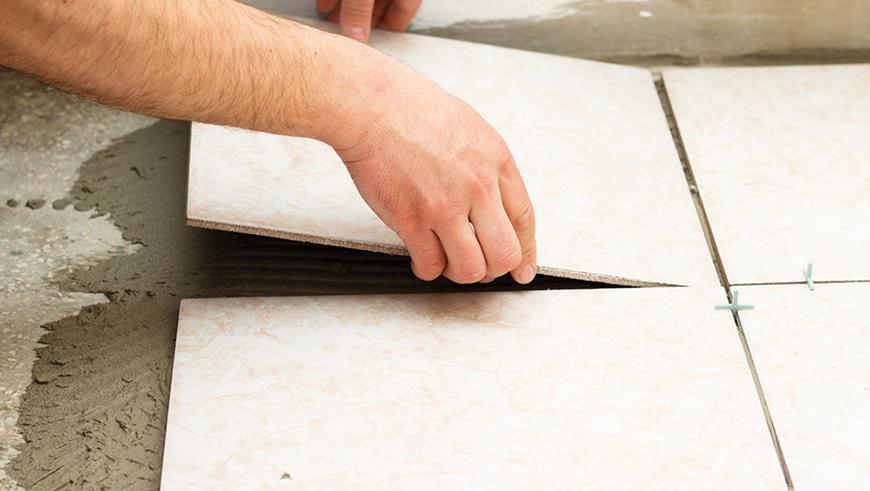The Cost of Replacing Kitchen Flooring
Last updated 8th February, 2024
Want to know more about replacing a kitchen floor?
This article is a comprehensive guide for kitchen floor replacement. Here you can find a breakdown of cheap kitchen flooring, kitchen floor fitters and how to replace a kitchen floor yourself.
Let's get started below!

How Much Does A New Kitchen Floor Cost?
The kitchen is usually one of the most used rooms in a typical house so it's important to have space which is both practical and stylish. When it comes to choosing kitchen flooring, there is a lot to consider, but the most obvious thing has to be that you need a floor that can be easily cleaned and is resistant to stains and water damage. But at the same time, the style has to match the interior design. There are a number of different types of popular kitchen flooring, but carpet is not one of them!
Carpet is not often used in the kitchen as it will soak up any spillages and it is hard to remove stains. In a kitchen, you really need flooring that can be cleaned easily if you spill anything, a material you can simply wipe without leaving any stains. Choosing something hard-wearing also makes perfect sense as kitchens do tend to get a lot of foot traffic. Laminate flooring is a popular option for kitchens as it looks good and is cheap and fairly easy to install DIY. Vinyl is another popular choice as like laminate it is easy to clean and is water-resistant. Vinyl and laminate are both available in a wide range of styles so are perfect for almost any kitchen.
The actual process of replacing a kitchen floor will depend on what type of flooring you currently have and what type of flooring you are installing. Typically older kitchens may have lino or vinyl flooring which will need to be removed first if not in a good condition. But if the old flooring is still in reasonable condition and just looks a little tired or old-fashioned, then you can lay new vinyl tiles or laminate flooring directly on top with removing the old flooring.
But any old carpet will definitely need removing before new flooring can be installed. So in summary, as long as you don't currently have carpet, most other types of flooring can be left in place as a sub-floor or new base. If laying new vinyl tiles over old vinyl or lino, then you need to thoroughly clean the old floor first to make sure the adhesive has a good surface and to prevent any mould. There is no need to lay new flooring wall to wall under the kitchen cabinets, in fact, it makes sense not to do this! However, you should remove any free-standing appliances and lay the flooring to the wall in those gaps. This makes it much neater and easier to pull those appliances out in the future should you need to replace them or simply want to get in behind them for a good clean.
Kitchen flooring is often replaced as part of a kitchen renovation project where new cabinets and/or appliances are being fitted. But the flooring can also be done in conjunction with a smaller refurbishment where just the cabinet doors and drawer fronts are replaced to renovate the kitchen without the large costs. New cabinet doors plus new flooring will completely transform the look of any kitchen.
The two most popular kitchen floors types, laminate flooring and vinyl flooring, often tend to get mixed. Laminate flooring and vinyl tiles are very popular choices thanks to their low cost, durability and ease of installation. But they do differ in a number of ways, though both work well in kitchens. There are some problems which can occur with kitchen flooring which could end up increasing the total cost of the job, but as long as you choose a suitable material such as laminate or vinyl, the main problems are caused by poor fitting, particularly with regards to preparation. Both vinyl and laminate require a smooth, clean and even surface as a base, so cutting corners and laying them on top of crumbling concrete or an uneven old wooden floor is asking for trouble. Extra time spent on preparation is always a good investment.
Kitchen Flooring Prices
In order to get accurate pricing information for replacing kitchen flooring, we compared numerous quotes from across the UK including estimates from small and large businesses. However, you should always get quotes from local tradesmen yourself as prices will always vary depending on the your own specific job.
The average material cost to replace your kitchen flooring will depend on the quality of materials you would like to use and the size of your kitchen. Naturally, a larger kitchen will require more materials and take longer to fit.
The average flooring specialist will usually charge around £100 to £150 per day to lay laminate or vinyl floooring. You have multiple options when replacing your kitchen flooring, you can choose from tiles, lino, vinyl, laminate, hardwood, engineered wood, carpet, concrete and resin. Types of flooring such as laminate can take up to 1-2 days to complete as the job is of higher difficulty when cutting the laminate to fit perfectly.
Below are some estimated costs of supplying & fitting kitchen flooring:
| Type of Flooring | Cost per m2 | Duration |
|---|---|---|
| Tiles | £20-£30 | 1 day |
| Laminate | £20-£30 | 1-2 days |
| Lino/Vinyl | £15-£25 | 2-3 hours |
| Concrete/Resin | £25-£30 | 1-3 days |
| Solid Wooden Flooring | £40-£70 | 1-2 days |
Cost Breakdown
Individual costs of fitting laminate flooring in a medium sized kitchen (20 m2) - Total Cost: £500










